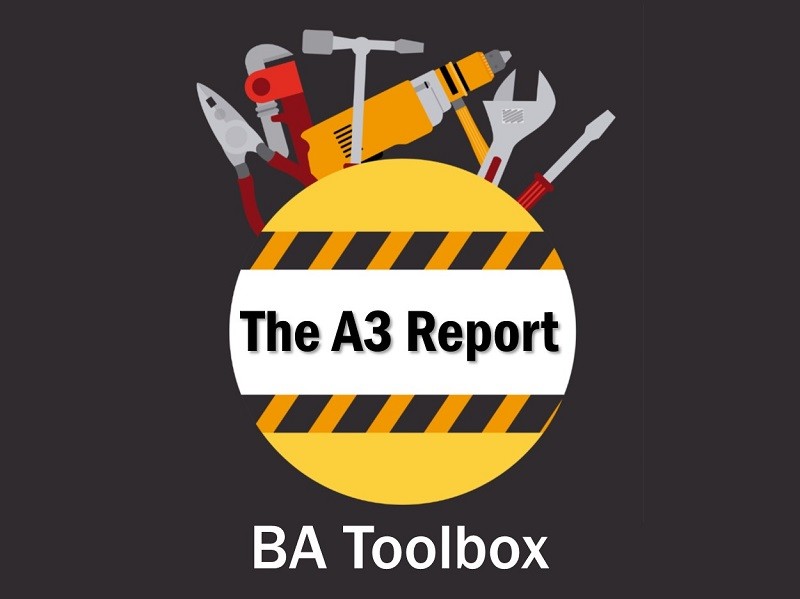In this episode of the BA Toolbox, we explore the A3 report and it’s use in problem solving.
Show Notes
What’s an A3 report? An A3 report has several uses including business proposals and process improvements. However, it’s most commonly used for problem solving.
If you have a tricky problem in your organization of with your project, perhaps an A3 report can help. The name A3 refers to the European paper size, which is similar to 11 by 17 inch tabloid paper in the United States. It’s big enough to fit a summary of the problem and solutions on a single page.
There’s more than one format for an A3 report and it’s usually broken down into sections to help the team think through the problem and potential solutions. Those sections are usually:
- Define the problem or need
- Understand the current state
- Create a goal statement or determine the target state
- Determine the root cause of the problem
- Identify potential countermeasures
- Determine which countermeasures you will implement
- Check the impact of your countermeasures
- Update work processes
These problem solving steps are similar to W. Edward Deming’s Plan-Do-Check-Act (PDCA) cycle, Six Sigma’s DMAIC process (Define, Measure, Analyze, Improve, Control), and even elements from Design Thinking.
Beyond taking the team through the problem solving approach, an A3 report is also a communication tool. It helps tell a story about the problem and what you’re doing about it.
To get the most out of an A3 report (or any problem solving approach for that matter), you need to start with the right mindset. The team should view this as an opportunity to build their problem solving skills. It’s an opportunity to bring together a group of people with diverse viewpoints and knowledge to do something that matters; to work together to solve a tricky problem.
If your organization doesn’t have an open and collaborative culture or if problems are seen as something to avoid instead of something to expose and solve, it’s going to be difficult to apply creative problem solving. If that’s the case for you, start by creating safety within the team. Be vulnerable yourself and thank people for raising concerns and issues. Help them shift from fear to a continuous improvement mindset.
Listen to the full episode for more information on using the A3 report and click the button below for a sample A3 Report template.
Thank you for listening to the program
To get more valuable content to enhance your skills and advance your career, you can subscribe on iTunes.
Also, reviews on iTunes are highly appreciated! I read each review and it helps keep me motivated to continue to bring you valuable content each week.



